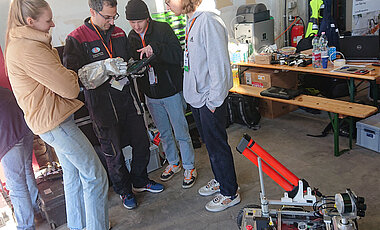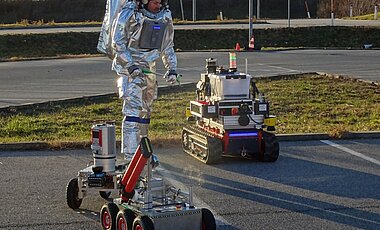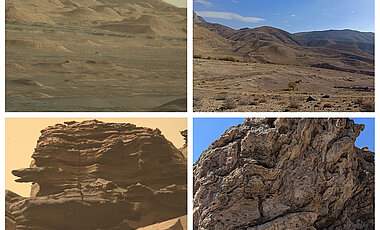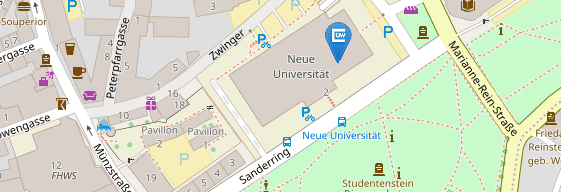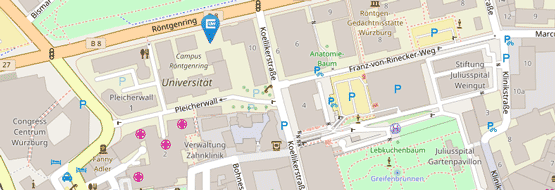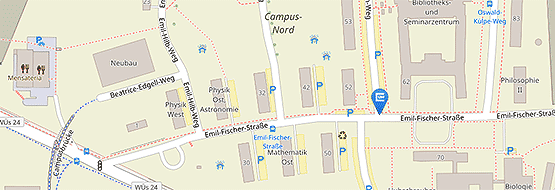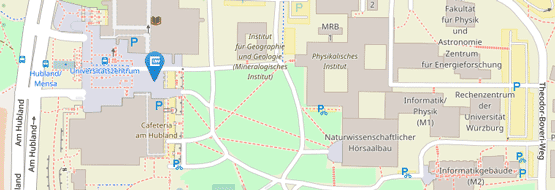Würzburg Robots Rehearse for Mars
02/09/2024Technology for possible Mars missions is being tested in the Armenian desert. Among them are two robotic systems that students from the University of Würzburg produced as part of the elite Satellite Technology programme.
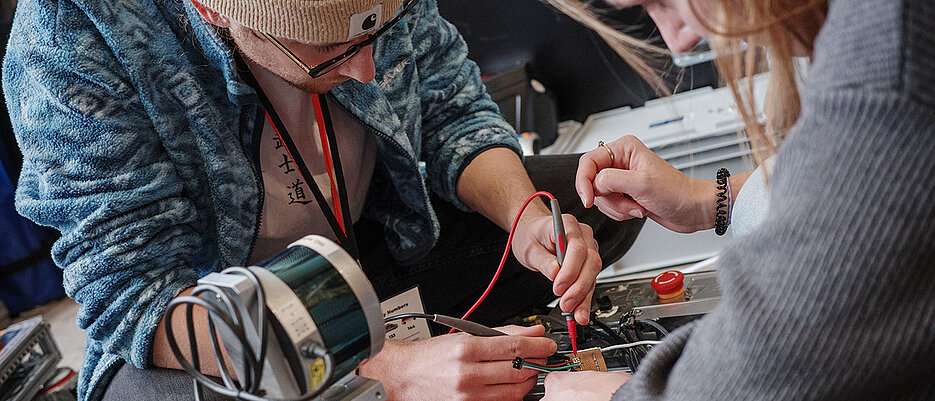
Although manned missions to Mars are a declared goal of space agencies such as NASA or the commercial space company SpaceX, it is likely to be several years before this happens. In the meantime, such missions are being simulated and tested on Earth.
Students from the elite Satellite Technology master programme at Julius-Maximilians-Universität Würzburg (JMU) are also involved in one such test mission, the Mars simulation AMADEE-24. They have developed two robotic systems for this purpose, which will be used in three experiments.
Armenian Desert as a Red Planet
On average, there are around 70 million kilometres between Earth and Mars. Of course, the Würzburg robots do not have to travel that far. They are travelling to the Armenian province of Ararat. The region was chosen because of its geological and topographical similarities to Mars.
"Recreating human-robot surface activities on Mars in terrestrial analogues, so-called analogue environments, has proven to be effective in developing the optimal mission architecture for complex research missions," explains Professor Andreas Nüchter. He heads the Chair of Robotics at JMU.
AMADEE-24 is being carried out by the Austrian Space Forum (ÖWF) in cooperation with the Armenian Space Agency. The Würzburg robots have already mastered the dress rehearsal at "Dress Rehearsal 2" in Vienna, and the real thing will now follow in Armenia from the beginning of March to the beginning of April.
Analogue Astronauts Control the Robotic Systems
AMADEE-24 serves as an authentic test run for the astronautical exploration of the Red Planet. During the simulation, a crew of six highly qualified analogue astronauts will carry out experiments with spacesuit prototypes in preparation for future human and robotic Mars exploration missions.
Analogue astronauts generally remain on Earth and their work provides important scientific findings for manned space missions.
During the mission in Armenia, the astronauts are in complete isolation and are in contact with a special Mission Support Centre in Austria. A ten-minute time delay in communication is simulated.
During "Dress Rehearsal 2", they have already been trained to control the robotic systems and perform the scientific tasks using the robots as tools.
The task of the Würzburg robot systems: In addition to creating 3D maps and geological analysis experiments, ultrawideband (UWB) localisation is to be tested using trilateration. To do this, the robot distributes sensor nodes that span a local coordinate system and localisation is then carried out in a similar way to GPS.
From Theory to Practice
For the Würzburg students, participating in AMADEE-24 is a great opportunity to put what they have learnt into practice.
Many of the challenges that arise during the test mission can also be found in the construction of satellites. "There is a ground segment, communication is only possible sporadically and with delays, experiments have to be well planned and carried out," explains Andreas Nüchter.
Exploration missions to the moon and Mars require a satellite infrastructure and help to deepen understanding of the advantages and disadvantages of future robotic and astronautical exploration.
"They offer added value for the preparation of scientific operations in remote areas and help to understand the limits and possibilities of technology and work processes," summarises Nüchter.
Contact
Prof. Dr Andreas Nüchter, Chair of Computer Science XVII - Robotics, nuechter@informatik.uni-wuerzburg.de
Additional images
